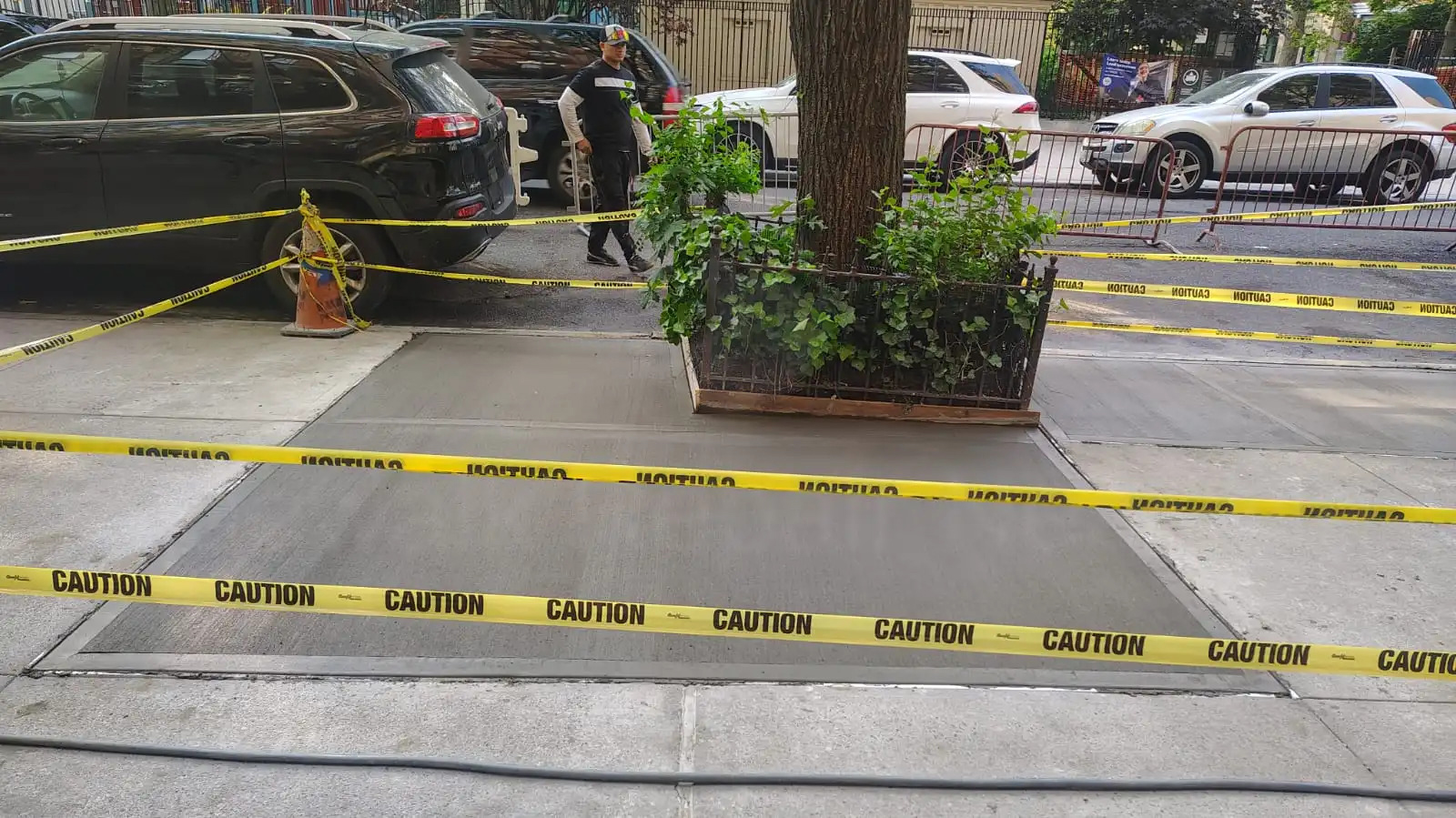
How Seasonal Weather Changes Damage Sidewalks Over Time?
Concrete sidewalks in New York City face relentless wear and tear, not just from pedestrian traffic but from the city’s dramatically changing seasons. Over time, the impact of heatwaves, freezing winters, heavy rainfall, and snow removal practices can significantly degrade sidewalk surfaces. Understanding the seasonal forces at play can help you safeguard your property and avoid expensive repairs or violations.
The Cumulative Impact of Extreme Weather
Seasonal temperature fluctuations can gradually wear down even the most well-built sidewalks. In NYC summers, concrete surfaces can heat up to 125°F or more under direct sunlight, according to the American Concrete Institute. This heat causes the slabs to expand, pushing against neighboring sections and increasing the risk of buckling, cracking, or joint failure.
Conversely, NYC winters regularly bring sub-freezing temperatures, triggering destructive freeze-thaw cycles. When moisture penetrates concrete and freezes, it expands by about 9% in volume, exerting powerful internal pressure. This process can create cracks, flaking (spalling), and even large surface holes over repeated cycles, weakening the integrity of the sidewalk over time.
Moisture: A Silent Culprit
With an average annual rainfall of 46.6 inches and about 30 inches of snowfall, moisture is a constant threat to New York sidewalks. Rainwater and melted snow easily seep into cracks or beneath slabs, especially in areas with poor drainage.
Once beneath the surface, this moisture can soften and displace the subgrade soil. Over time, this results in uneven settling, sunken slabs, and trip hazards. In winter, retained water under the surface freezes and lifts the slabs (a phenomenon known as frost heave), further compounding surface irregularities.
Chemical Damage from Snow Removal
While snow removal is essential for pedestrian safety and mandated by NYC law (within 4 hours after snowfall ends), it often comes at a cost. Many commercial de-icing products contain calcium chloride or magnesium chloride, which can chemically react with concrete, causing surface scaling, erosion, and structural weakening.
Additionally, frequent scraping with metal snowplows and heavy shovels can chip edges and wear away at the sidewalk’s surface. These physical and chemical stressors, repeated every winter, accelerate deterioration and significantly shorten the life of the concrete.
Long-Term Protection Strategies for Sidewalks
Following are some of the best practices you can follow to protect your sidewalks from ongoing seasonal changes and long-term wear and tear.
1. Invest in Durable, Weather-Resistant Materials
For new installations or repairs, use air-entrained concrete with a PSI rating of 4000–4500, engineered for freeze-thaw resistance. Reinforced concrete with proper control joints reduces the risk of cracking by absorbing seasonal movement. According to the National Ready Mixed Concrete Association, such materials can increase sidewalk life expectancy by 25–40%.
2. Apply Penetrating Concrete Sealants
Sealants create a hydrophobic barrier that prevents water and chemical infiltration. A silane/siloxane-based sealant is ideal for NYC’s climate and should be reapplied every 2–3 years. Sealed concrete is proven to reduce surface scaling by over 85% during freeze-thaw cycles, according to the Portland Cement Association.
3. Improve and Maintain Drainage Systems
Proper drainage is one of the most overlooked but critical components of sidewalk longevity. Ensure a minimum slope of 2% away from structures to direct water runoff. Maintain adjacent gutters, catch basins, and downspouts to prevent water pooling that compromises sidewalk foundations.
4. Repair Small Issues Before They Escalate
Tiny cracks and chips may seem harmless, but they allow water intrusion and initiate deeper structural damage. Proactively filling cracks with epoxy or polyurethane sealant and patching worn sections can extend the sidewalk’s lifespan and prevent safety hazards.
5. Adopt Safer Snow Removal Practices
To minimize damage during winter:
- Use plastic-edged shovels instead of metal.
- Replace harsh rock salt with concrete-safe ice melts like calcium magnesium acetate.
- Avoid overapplying chemicals, as excess residue can leach into the concrete and soil.
A study by the Minnesota DOT found that using safer ice melt alternatives can extend concrete service life by 10 years in cold regions.
6. Schedule Regular Seasonal Inspections
Routine checks, especially before winter and after snowmelt, can catch early signs of deterioration. Consider seeking assistance from licensed concrete contractors who can professionally assess joint performance, drainage issues, frost heave indicators, and structural stability. Preventive maintenance programs can reduce major repair costs by up to 50%, industry reports say.
Conclusion
NYC’s climate puts sidewalks through a constant seasonal stress test. From heat expansion and freeze-thaw cycles to heavy rains and corrosive snow removal, the cumulative effects of weather can leave property owners dealing with expensive repairs or, worse, legal liability.
By taking proactive steps like sealing, inspecting, and using safe snow removal methods, you can extend the lifespan of your concrete sidewalks, reduce hazards, and stay compliant with NYC regulations.
When in doubt, consulting a professional sidewalk contractor ensures you're making the right decisions backed by experience and city code compliance. The best defense against seasonal damage is year-round maintenance.
